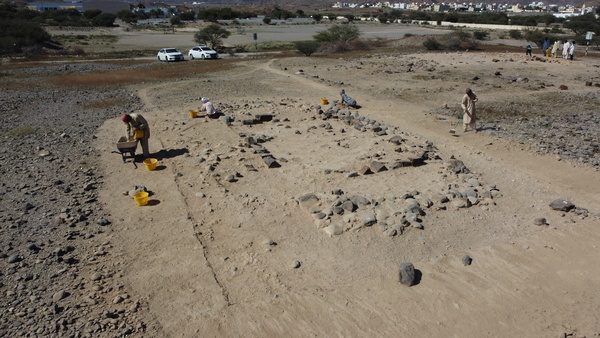
Muscat: Archaeological excavations in the Wilayat of Rustaq, South Al Batinah Governorate, have revealed a large and sophisticated settlement, dating back to more than four thousand years ago, which includes a large number of huge buildings and tombs.
This was revealed in a site known by the locals as Al-Tekha, and located on the outskirts of the Al-Hajar Mountains on the western bank of Wadi Al-Ghashab, near the confluence of Wadi Al-Sahtan with Wadi Al-Ghashab.
It was excavated by the joint archaeological mission of the Department of Archeology at Sultan Qaboos University represented by Dr. Khaled Douglas and the Italian University of Pisa represented by Dr. Sara Pizzimenti, under the supervision of the Ministry of Heritage and Tourism.
The archaeological mission began its excavations at the site in early January 2022, as the first season of this mission at the site, with a plan to follow up the research and excavation work for many years in the future.
The results of the archaeological excavation showed that the site was inhabited for the first time in the third millennium BC during the Early Bronze Age, representing one of the settlements of the Umm an-Nar culture, which witnessed great and wide prosperity in the Omani Peninsula.
The site spreads over a vast area of land of more than 70 hectares, which makes it one of the largest settlements of Umm an-Nar culture in the Omani Peninsula.
A large number of domestic buildings of various sizes were found in its central area, in addition to several circular tombs that spread on the western side of the settlement, whose outer walls were elaborately built of white well-cut limestones.
It was also revealed that there are some huge circular towers in different areas of the settlement, some of which are more than forty meters in diameter, built of mud bricks walls based on huge stone foundations.
The presence of public buildings and huge towers indicates the importance of the cultural role played by the inhabitants of the settlement during the Early Bronze Age, which may have represented a major and important cultural centre in the north of the Sultanate in general and the Al Batinah Plain region in particular.
The pottery sherds and archaeological finds uncovered by the expedition also indicate that the inhabitants of the settlement had close commercial relations with neighbouring civilizations such as the Harappa civilization in the Indus Valley and the Mesopotamian civilization. The remains of copper furnaces found inside the settlement indicate that the residents relied heavily on copper production, smelting, and trading in their subsistence economy.
Copper mines from which copper was extracted have not yet been found, but the archaeological mission is seeking to search for it in the coming seasons.
The site of Al-Tekha is the first settlement from the Early Bronze Age to be excavated in the South Al Batinah. Therefore, the site will be added to the tourist map of the Wilayat of Rustaq to give it a new cultural dimension that increases the state’s richness in heritage and cultural sites.